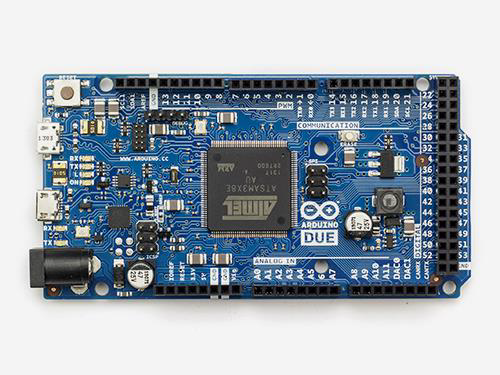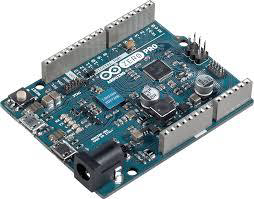Arduino Due and Zero
May 15, 2021 Arduino
Table of contents
Arduino Due is a microcontroller board based on the Atmel SAM3X8E ARM Cortex-M3 CPU. /b10> It is the first Arduino board based on a 32-bit ARM core microcontroller.
Key features:
- It has 54 digital input/output pins (12 of which can be used as PWM outputs)
- 12 analog inputs
- 4 UART (hardware serial ports)
- 84 MHz clock, one USB OTG connection
- 2 DACs (digital to analog), 2 TWI, 1 power jack, 1 SPI head, 1 JTAG head
- Reset the button and a clear button

The characteristics of the Arduino Due board
| Operating voltage | CPU speed | Simulated input/output | The number IO/PWM | EEPROM [KB] | SRAM [KB] |
Flas h[KB] |
Usb | Uart |
|---|---|---|---|---|---|---|---|---|
| 3.3 volts | 84 Mhz | 12/2 | 54/12 | - | 96 | 512 | 2 microns | 4 |
Communication
- 4 hardware UART
- 2 I2Cs
- 1 CAN interface (automotive communication protocol)
- 1 SPI
- 1 Interface JTAG (10 pins)
- 1 USB host (like Leonardo)
- 1 programming port
Unlike most Arduino boards, the Arduino Due board operates at 3.3V. /b10> The maximum voltage that the I/O pin can withstand is 3.3V. A pplying voltage above 3.3V to any I/O pin can damage the board.
The board contains everything you need to support microcontrollers. Y ou can connect it to your computer using a micro-USB cable, or power it with an AC-to-DC adapter or battery to enable it. /b11> Due is compatible with all Arduino shields operating at 3.3V.
Arduino Zero
Zero is a simple and powerful 32-bit extension of the platform built by UNO. T he Zero board extends its family by providing higher performance, offers a variety of project opportunities for devices, and is an excellent educational tool for learning about 32-bit application development.
The main features are:
-
Zero applications range from smart IoT devices, wearable technology, high-tech automation, to crazy robotics.
-
The board is powered by Atmel's SAMD21 MCU, which is equipped with a 32-bit ARM Cortex ® M0 plus core.
-
One of its most important features is Atmel's Embedded Debugger (EDBG), which provides a complete debugging interface without the need for additional hardware and significantly improves the ease of use of software debugging.
-
EDBG also supports virtual COM ports that can be used for device and boot loader programming.

The characteristics of the Arduino Zero board
| Operating voltage | CPU speed | Simulated input/output | Digital IO / PWM | EEPROM [KB] | SRAM [KB] | Flash [KB] | Usb | Uart |
|---|---|---|---|---|---|---|---|---|
| 3.3 volts | 48 Mhz | 6/1 | 14/10 | - | 32 | 256 | 2 microns | 2 |
Unlike most Arduino and Genuino boards, Zero operates at 3.3V. /b10> The maximum voltage that the I/O pin can withstand is 3.3V. A pplying voltage above 3.3V to any I/O pin can damage the board.
The board contains everything you need to support microcontrollers. Y ou can connect it to your computer using a micro-USB cable, or power it with an AC-to-DC adapter or battery to enable it. Z ero is compatible with all shields operating at 3.3V.